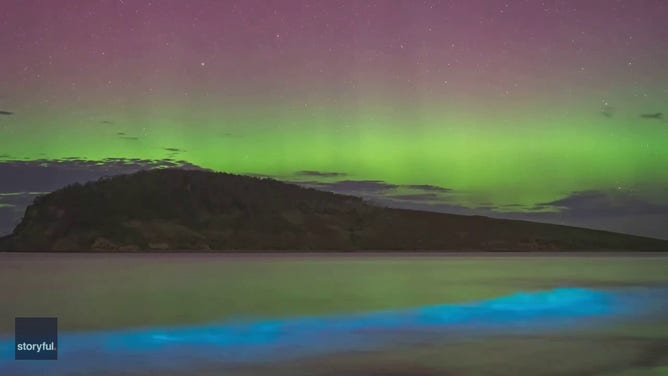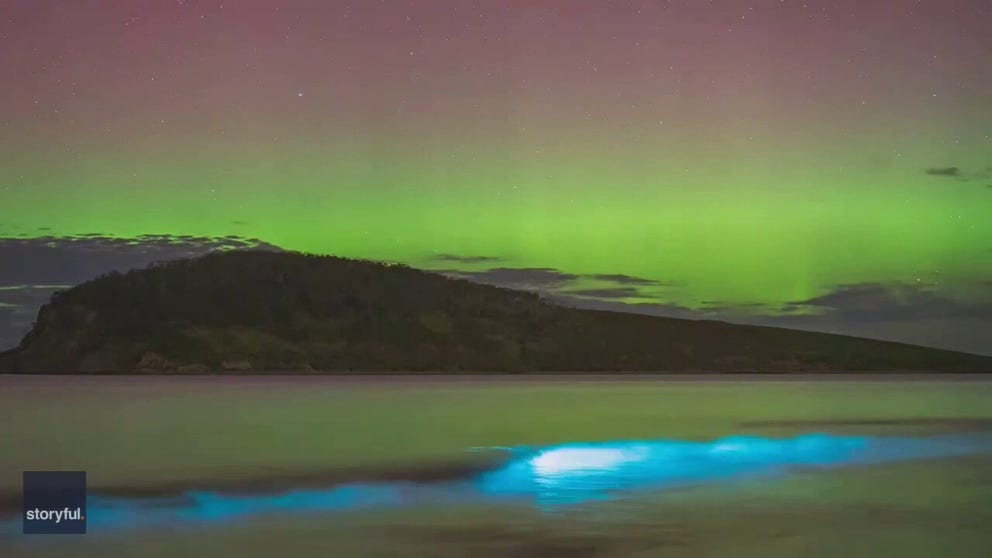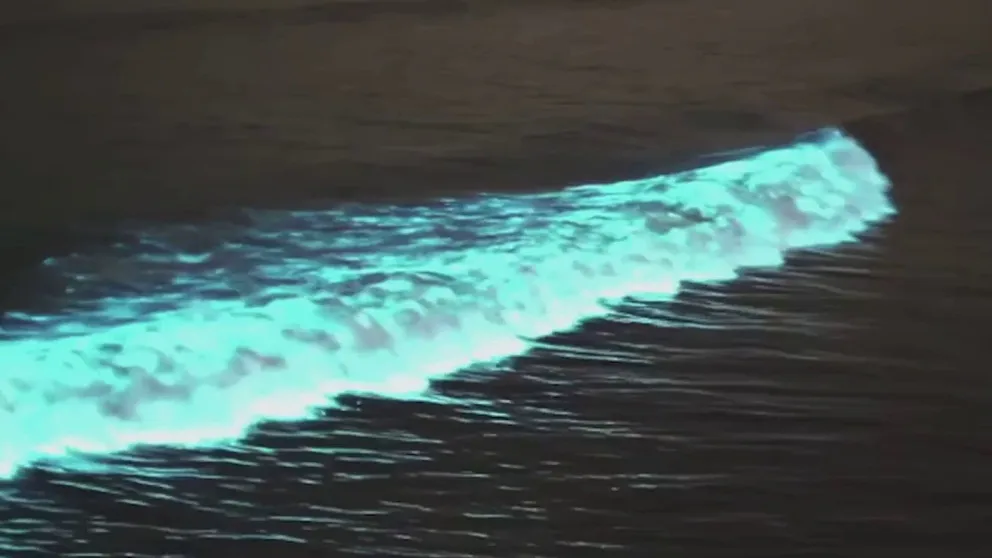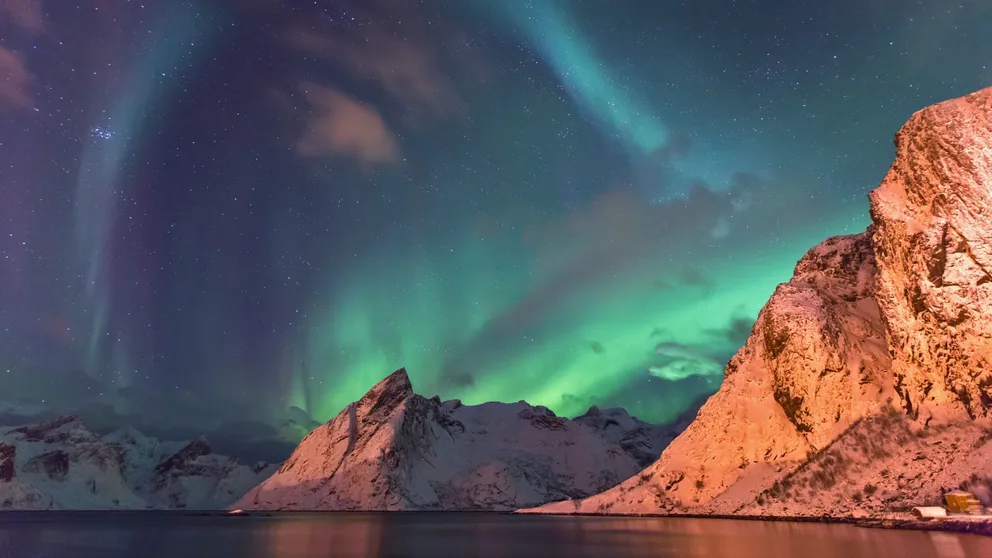Mesmerizing video shows vibrant aurora dancing above bioluminescent water in Australia
The light that comes from the waves is courtesy of billions of microorganisms in a process called bioluminescence. Single-celled plankton, called dinoflagellates, release energy when disturbed by waves or a swimmer, and that gives off the light.
Watch: Time lapse video shows vibrant aurora dancing above bioluminescent water in Australia
A photographer captured time lapse video of a dazzling aurora lighting up the sky above bioluminescent waves in the Greater Hobart area, Tasmania, on February 16.
TASMANIA, Australia – A photographer in Australia was able to capture a stunning time-lapse video of a dazzling aurora lighting up the sky above bioluminescent waves Down Under.
Ben Swanson said he captured the jaw-dropping footage in the Greater Hobart area of Tasmania on Feb. 16.

A photographer captured time<strong>-</strong>lapse video of a dazzling aurora lighting up the sky above bioluminescent waves in the Greater Hobart Area, Tasmania, on Feb. 16, 2023.
(Ben Swanson via Storyful)
The stunning video shows the green and red auroras hanging above the neon-blue bioluminescent waves.
"To see both of these phenomena together was truly magical," he told Storyful.
ABSOLUTELY MIND-BOGGLING!' AURORA CHASER SNAPS GLOWING SKIES, GLOWING JELLYFISH IN SAME PHOTO
What is bioluminescence?
Exploring the beauty of bioluminescence
It looks like something out of a dream. Waves of blue light crashing ashore onto the California coast. The light is coming from inside the surf itself, courtesy of billions of microorganisms - a phenomenon known as bioluminescence.
The light that comes from the waves is courtesy of billions of microorganisms in a process called bioluminescence.
"Bioluminescence is when living organisms produce light, so they have the chemistry within their cells, their bodies to have a chemical reaction that involves the release of energy comes out as light that we can see," said Michael Latz, a marine biologist at Scripps Institution of Oceanography through the University of California, San Diego.
The single-celled plankton, called dinoflagellates, release energy when disturbed by waves or a swimmer.
"The purpose of the light can be for attracting prey or searching out prey like a flashlight or attracting mates or defending against predators," Latz said. "Bioluminescence or signaling by light is a really effective way of communicating, and of course, in shallow waters like along the coast, it's something that occurs at night."
7 THINGS TO KNOW ABOUT THE NORTHERN LIGHTS
What is an aurora?
What is an aurora? The northern lights explained
Dancing across the skies in vibrant ribbons of color, auroras are one of nature’s most magnificent natural phenomena.
A vivid aurora display, also known as the northern lights here in the Northern Hemisphere, usually follows solar events known as coronal mass ejections or solar flares. The flares bring a barrage of electrons that interact with oxygen and nitrogen in Earth's magnetic field that surrounds the outside of the planet.
WATCH OUT FOR THESE ASTRONOMICAL EVENTS IN 2023
And the colors vary by the type of gas present. Oxygen molecules give off a green or yellow glow or sometimes can give off a bit of a red hue, according to NASA.
Meanwhile, nitrogen will give off blue hues when hit by solar energy.


